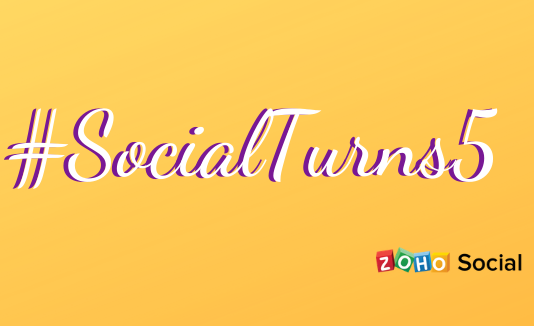- HOME
- Brand Stories
- Pinterest marketing strategies from the best brands in the game
Pinterest marketing strategies from the best brands in the game
- Last Updated : August 17, 2023
- 5.3K Views
- 6 Min Read

If you line up a group of 10 people who’ve used Pinterest, chances are at least 6 of them have discovered multiple new businesses thanks to the platform. It’s estimated that at least 27% of the Fortune 500 companies have an active Pinterest marketing strategy in place and is the second biggest SEO driver among all social networks. Surprised? Well, there’s more where that came from.
Not only is Pinterest a haven for visual marketing, but it’s also optimized for content discovery—both outside the platform via search engines, and once you’re inside the platform. While browsing topics inside the board can lead to discovering similar brands and content, each of these pins further fetches traffic for the posters by connecting to an external webpage. It doesn’t come as a surprise, that the digital magazine Social Media Examiner calls it a ‘visual search engine‘. Because to some capacity, it is.
How does it stand out?
Pinterest may have the same ‘visual’ hook that Instagram does, but the two networks are like chalk and cheese—widely different in their appeal and use. The mobile-focused Instagram takes a ‘personal’ tone with its content, much like its parent company Facebook was originally positioned to be.
Functionality-wise, Instagram is a platform to create and share images, while Pinterest is more focused on content curation and discovery. The latter is reinforced by the fact that each Pin usually opens up into an external website to get traffic into, while Instagram still doesn’t allow links on individual posts, and tends to keep its users within the platform.
The way each board works, Pinterest is far more flexible in story-telling and acting as a virtual scrapbook for both individuals and brands, while Instagram is where more conversations are happening. With such markedly different features, brands must think twice before getting into the platform and not assume the one-size-fits-all approach for visual marketing.
Note for marketers
Once you’ve decided to roll-up your sleeves and get down to business on Pinterest, it’s best to look at your visual content and make some tough decisions. Not every piece of marketing material can pass through the white-red gates, and end up at the repin zone. Exercise discretion. Say no to stock photos and space-fillers that may fare decently on a platform like Instagram. Pinterest is where people ideate visually, not just browse for pretty images. Unlike other social networks that have myriad purposes, Pinterest caters to broadly two needs—looking for interesting content, and building category-wise segments to nest this content.
If you look at a typical Pinterest home page, even the layout screams ‘idea board’. So it’d be a wise call to leave out abstract imagery behind, and charge ahead with clear ideas for your brand like DIY boards, and instructional content—the things that people actually search for on the platform.
Brands who are killing it on Pinterest
Naturally, there are brands who have understood this, and are in fact, using it to further their reach and get more traffic to their webpages. If you look them up, you’ll notice a common thread between these brands that shine on Pinterest. Their content has more audience-focus than brand-focus. For instance, on Instagram, it’s easier to slip in the occasional workspace clicks, inspirational quotes, and other space fillers—but owning a Pinterest board sets a specific purpose for your content, which helps the viewer prioritize what they want to see and only access that.
Let’s look at some brands that have a large Pinterest community, and are effectively managing this.
1. Starbucks – Understanding what drives engagement for a channel
Starbucks is known for its active and vibrant social media presence, and the brand content is perfectly aligned for each social network it is active on. While its Instagram profile sports pretty, picturesque content that gets the most hearts on the platform, its Pinterest content is a little different. Take a look.

Starbucks’ Pinterest is not just for lovers of the brand, but lovers of coffee in general. There are whole boards dedicated to the brand’s most popular import—Frappucinos and teas. You can also deep-dive into their recipes, How-To’s and other boards that a coffee aficionado is sure to re-pin. Not only are they tapping into the interest and aesthetic appreciation of people, but they’re also utilizing the model that stands out best on Pinterest, making content most visible—the arty-infographic style!
2. IKEA – Adapting content for wider demographics
What do you do if you have followers from around the world, and are faced with the challenge of marketing to all of them on social media? You adapt. By remodeling your existing strategy to fit varied segments, you can effectively market across various demographics. If I had to say it in fewer words, you can take the IKEA-route to appeal to a wide range of audience.
The furniture and interior decor enterprise have a well-fleshed out social media strategy, and this is most evident on its Pinterest profile. It doesn’t merely dump content, but rather curates content targeted to specific pockets of its audience. This is done by maintaining separate Pinterest profiles for each country where the brand has a major presence.

For instance, IKEA Canada has boards that reflect the interests of people living in that region—boards that are dedicated to outdoor decor, DIY, and North American holidays. Meanwhile, IKEA France has content that suits its French audience—more apartment-centered ideas, space management hacks, luxury decor, which is tailored to be relevant to the people in France.
3. Adobe – Sharing ideas and inspiration
As one of the most well-positioned brands on Pinterest, it’s no shocker that Adobe has over 10 million active monthly followers on the network. On Twitter, its blog gives you the 101 on design and concept. On Instagram, the brand’s stunning lineup of images does all the talking. But it’s a pitch for Pinterest is even better—it gives you ideas to make your own lineup of stunning images. From sharing interesting design templates to sharing useful tips about creating a design, it covers the whole nine yards.
4. Visualmodo – Turn your Profile into a shop gallery
Shortlisting a theme for your website takes a lot of research and is definitely not an easy task—but if all those lists, articles and research you dug up for it can be simplified into large idea boards, with swatches of designs and inspiration that you can organize in one place, it makes the job far simpler.

Because let’s face it, finding the right templates, logos, icons take time, that’s why Visualmodo – a brand that provides WordPress themes and plugins-for instance, categorizes each of these into neat Pinterest boards—much like a visual shopping gallery of WordPress features. This not only puts the network to great use, but also helps people discover a lot in one go, and save on the hours spent individually hunting down all parts of what you need.
5. Microsoft – Managing enterprise level-marketing effectively
When you’re a large enterprise with multiple brands under you, it’s hard to strike the right balance on social media sometimes. There are just too many things happening, and finding a neutral tone for all your audience who have different interests and priorities, can be hard. But with the flexibility that social networks provide us, it is possible to maintain a different persona for each sub-brand you manage under the business. This is best exemplified by what Microsoft is doing on Pinterest, where it caters to multiple audiences within the same network.
‘Microsoft Education‘ – an offshoot of the main brand, is a separate entity on Pinterest is focused only on one thing – educating people. There’s no trace of brand signaling, overt marketing or product display anywhere. Rather than adjusting their brand content for Pinterest, Microsoft manages multiple Profiles with each dedicated to one of its products or activities, thus making content far more specific to its audience.
What about all the brand content then? All that goes under separately managed Pinterest Profiles – for instance, ‘Surface‘, that only focuses on showing off the line of touchscreen computers—oceans apart from Education, which shares things like STEM study material in different languages, useful tips for coders, etc.
Even if replicating these exact ideas is not feasible—the underlying ideas can provide a runway for planning your own strategy. Let us know what brands you like best on Pinterest, drop a comment below and let’s compare notes!
 Amruthavarshinii
AmruthavarshiniiChats & writes about anything from social media, culture, to how chai latte isn't a real thing.



